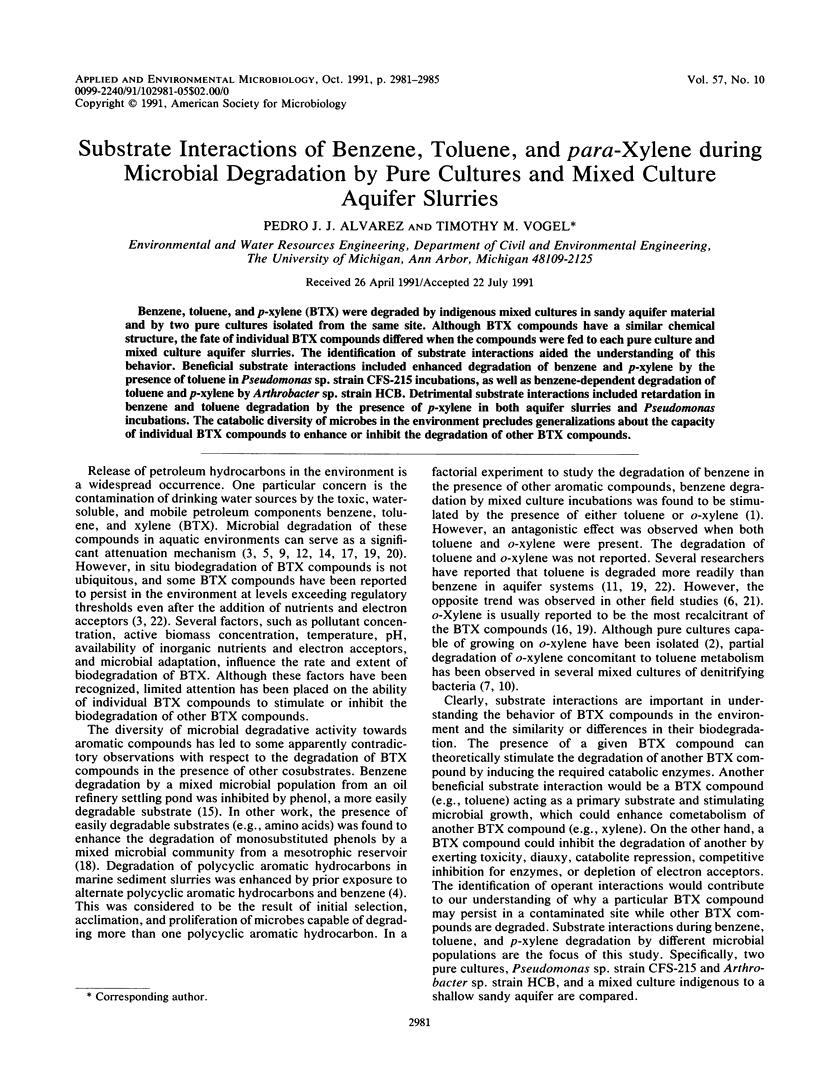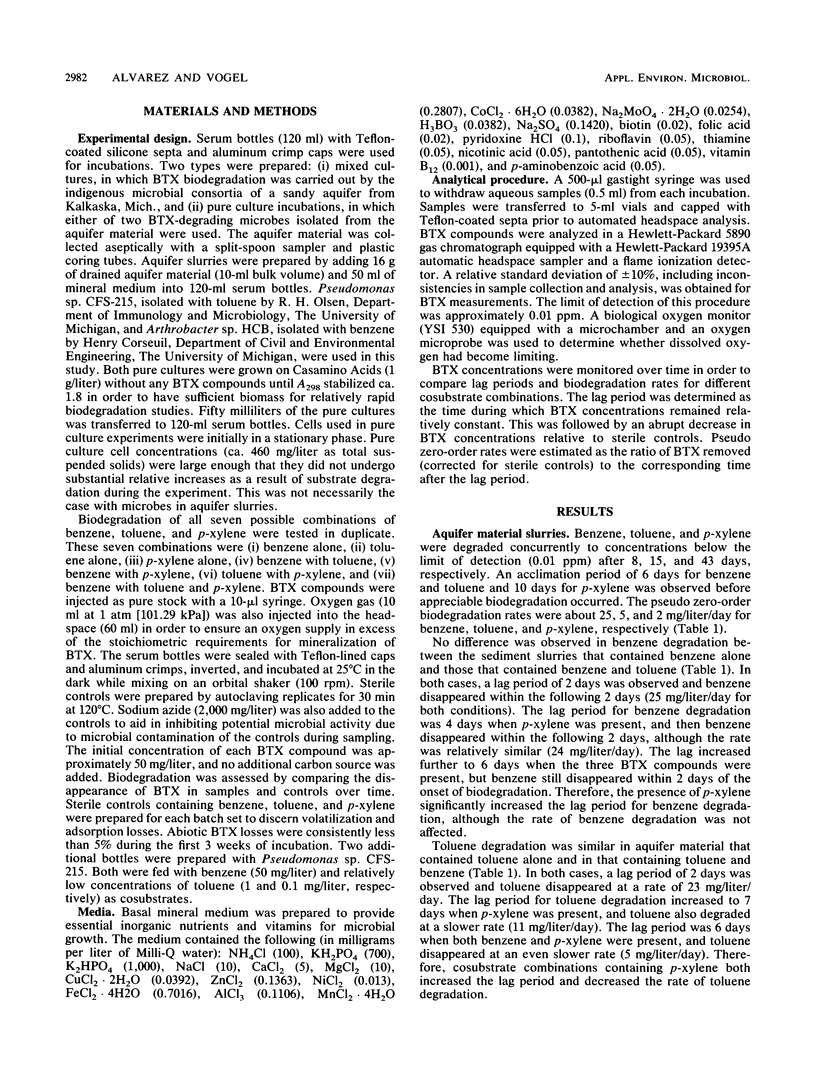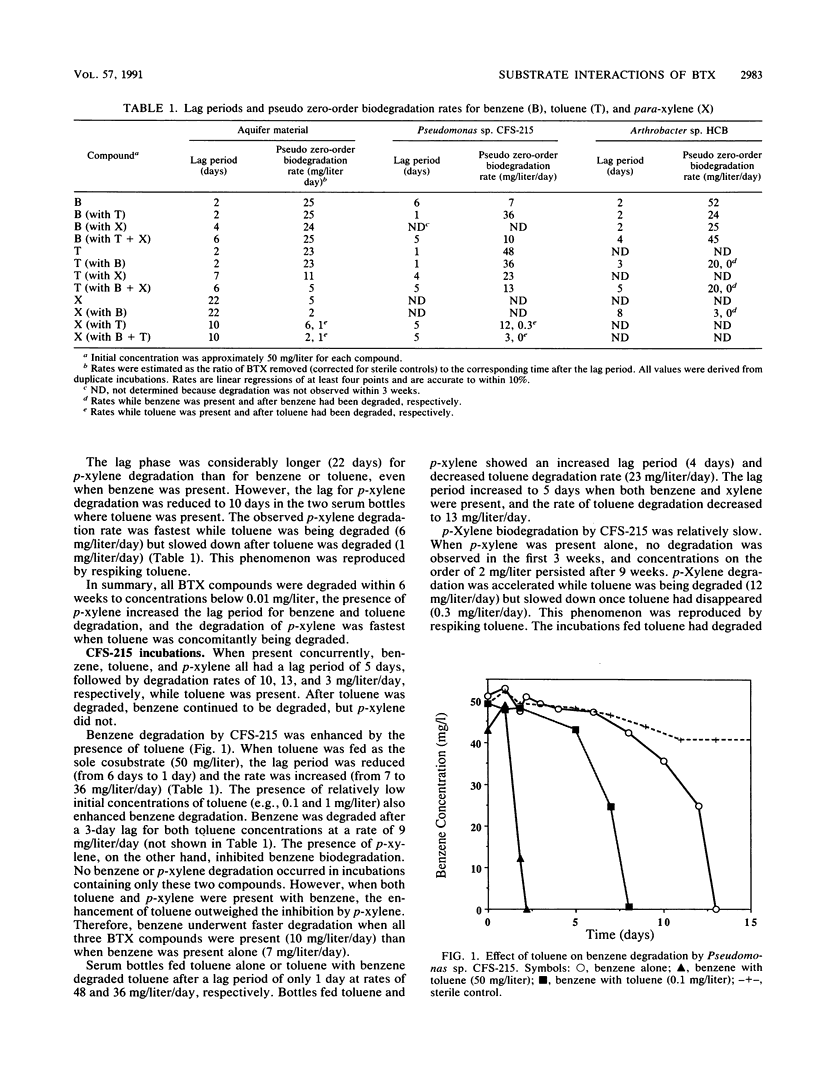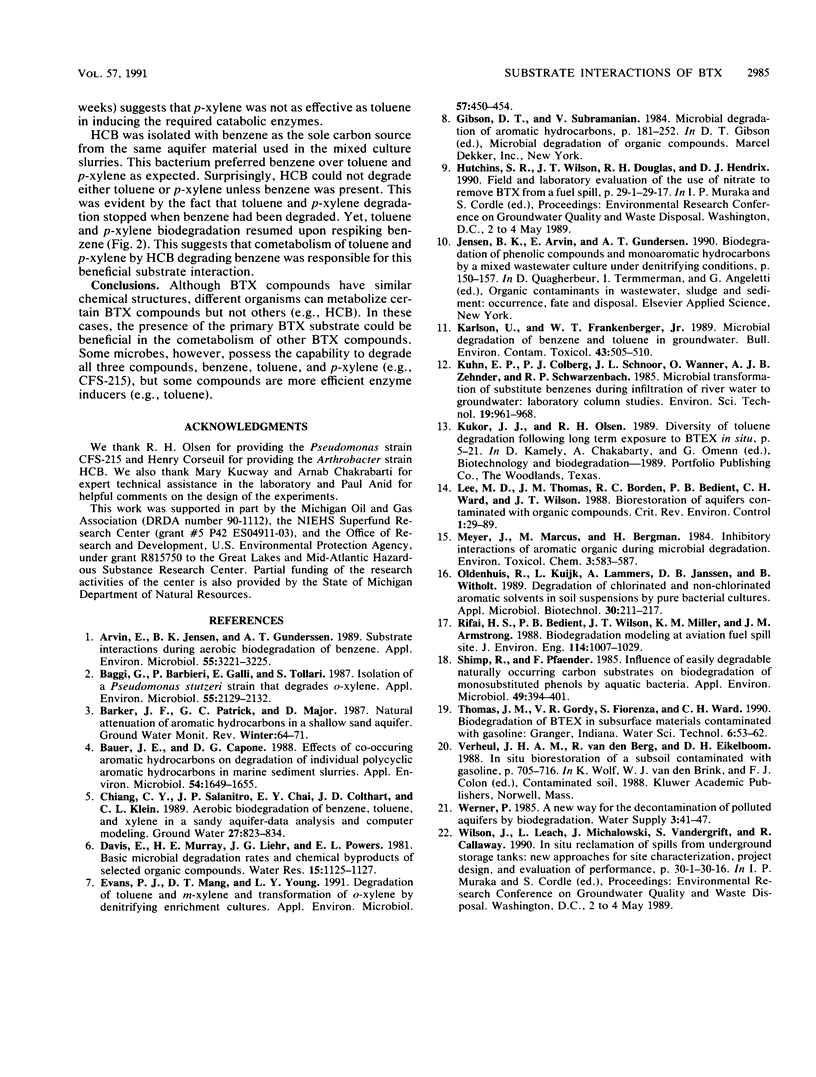Abstract
Benzene, toluene, and p-xylene (BTX) were degraded by indigenous mixed cultures in sandy aquifer material and by two pure cultures isolated from the same site. Although BTX compounds have a similar chemical structure, the fate of individual BTX compounds differed when the compounds were fed to each pure culture and mixed culture aquifer slurries. The identification of substrate interactions aided the understanding of this behavior. Beneficial substrate interactions included enhanced degradation of benzene and p-xylene by the presence of toluene in Pseudomonas sp. strain CFS-215 incubations, as well as benzene-dependent degradation of toluene and p-xylene by Arthrobacter sp. strain HCB. Detrimental substrate interactions included retardation in benzene and toluene degradation by the presence of p-xylene in both aquifer slurries and Pseudomonas incubations. The catabolic diversity of microbes in the environment precludes generalizations about the capacity of individual BTX compounds to enhance or inhibit the degradation of other BTX compounds.
Full text
PDF




Selected References
These references are in PubMed. This may not be the complete list of references from this article.
- Arvin E., Jensen B. K., Gundersen A. T. Substrate interactions during aerobic biodegradation of benzene. Appl Environ Microbiol. 1989 Dec;55(12):3221–3225. doi: 10.1128/aem.55.12.3221-3225.1989. [DOI] [PMC free article] [PubMed] [Google Scholar]
- Baggi G., Barbieri P., Galli E., Tollari S. Isolation of a Pseudomonas stutzeri strain that degrades o-xylene. Appl Environ Microbiol. 1987 Sep;53(9):2129–2132. doi: 10.1128/aem.53.9.2129-2132.1987. [DOI] [PMC free article] [PubMed] [Google Scholar]
- Bauer J. E., Capone D. G. Effects of co-occurring aromatic hydrocarbons on degradation of individual polycyclic aromatic hydrocarbons in marine sediment slurries. Appl Environ Microbiol. 1988 Jul;54(7):1649–1655. doi: 10.1128/aem.54.7.1649-1655.1988. [DOI] [PMC free article] [PubMed] [Google Scholar]
- Evans P. J., Mang D. T., Young L. Y. Degradation of toluene and m-xylene and transformation of o-xylene by denitrifying enrichment cultures. Appl Environ Microbiol. 1991 Feb;57(2):450–454. doi: 10.1128/aem.57.2.450-454.1991. [DOI] [PMC free article] [PubMed] [Google Scholar]
- Karlson U., Frankenberger W. T., Jr Microbial degradation of benzene and toluene in groundwater. Bull Environ Contam Toxicol. 1989 Oct;43(4):505–510. doi: 10.1007/BF01701927. [DOI] [PubMed] [Google Scholar]
- Shimp R. J., Pfaender F. K. Influence of easily degradable naturally occurring carbon substrates on biodegradation of monosubstituted phenols by aquatic bacteria. Appl Environ Microbiol. 1985 Feb;49(2):394–401. doi: 10.1128/aem.49.2.394-401.1985. [DOI] [PMC free article] [PubMed] [Google Scholar]


